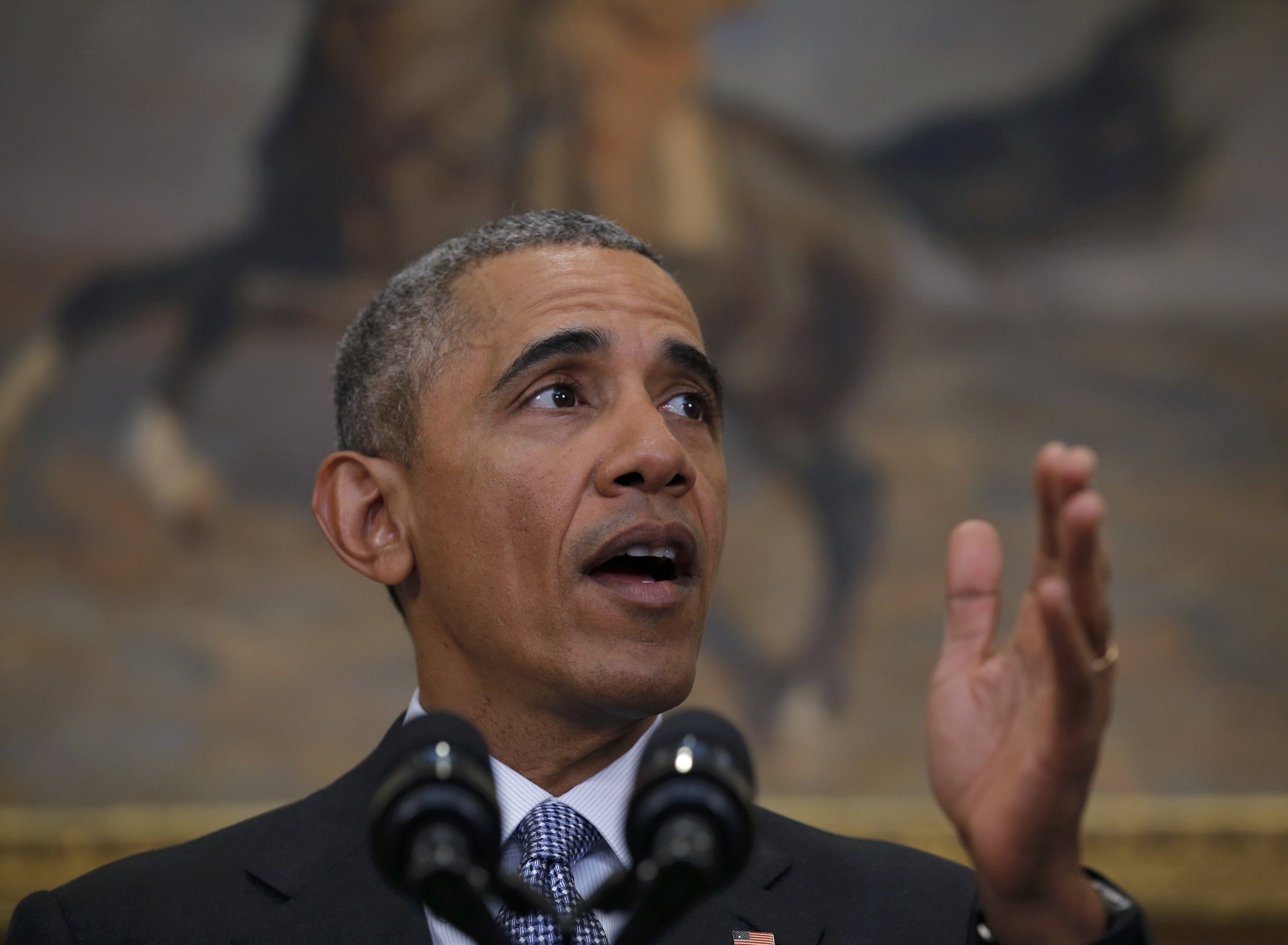
"Keeping this facility open is contrary to our values, it undermines our standing in the world." —@POTUS on Guantanamo
— White House Archived (@ObamaWhiteHouse) February 23, 2016
With less than a year left in office, Obama unveiled a plan that says the United States should continue to transfer low-risk detainees to other countries and which describes how 13 possible replacement facilities could save the US taxpayer millions of dollars each year.
"For many years, it's been clear that the detention facility at Guantanamo Bay does not advance our national security. It undermines it," Obama said in a White House address.
"It has been clear that the detention facility at Guantanamo Bay does not advance our national security—it undermines it" —@POTUS
— White House Archived (@ObamaWhiteHouse) February 23, 2016
Watch the statement @POTUS just delivered on Guantanamo: https://t.co/T0WHkZLfm0
— Department of State (@StateDept) February 23, 2016
"This is about closing a chapter in our history. It reflects the lessons that we've learned since 9/11 - lessons that need to guide our nation going forward."
"It reflects the lessons we’ve learned since 9/11—lessons that must guide our nation going forward." —@POTUS on his plan to close Guantanamo
— White House Archived (@ObamaWhiteHouse) February 23, 2016
A total of 91 suspected extremists remain at Guantanamo, a prison that once housed about 700 inmates at its peak and has become synonymous around the world with torture, indefinite detention and orange jumpsuits.
Obama has pushed for Guantanamo's closure since taking office in 2009, but his efforts have been thwarted by Republican lawmakers, many of whom see it as a useful tool in combating terror. Obama says the opposite is true, and that the facility feeds into anti-US, extremist propaganda.
The US president also has faced opposition from within his own administration, with the Pentagon accused of slow-pedaling transfers and overstating closure costs.
Guantanamo Bay detainee repatriated to Saudi Arabia
"This plan deserves a fair hearing, even in an election year," Obama said Tuesday.
"The plan we’re submitting today is not only the right thing to do for our security, it will save money" —@POTUS on closing Guantanamo
— WH Live (Archived) (@WHLive44) February 23, 2016
The Guantanamo Bay closure plan, which took months to produce, gives few specifics on where a US facility would be, but military officials have previously listed Fort Leavenworth, Kansas or the US Navy brig in Charleston, South Carolina among the possible destinations for inmates.
Those locations, however, face objections from local politicians.
The US leader has long argued that many Guantanamo prisoners should be transferred overseas and some should be tried by military courts.
A small number - those deemed too dangerous to release but too difficult to prosecute - would be held in the United States.
But Congress has placed a ban on transfers to the US, deepening the legal thicket.
Human rights groups worry this would only extend detentions without trial and create a "Guantanamo North."
"The possibility of a new, parallel system of lifelong incarceration inside the United States without charge would set a dangerous precedent," Amnesty International said in a statement.
"If successfully mounted, it would be a devastating blow to basic principles of criminal justice."
Guantánamo must be closed by addressing the problem head-on, not moving it somewhere elsehttps://t.co/Zv1srRXA6l pic.twitter.com/ZR56Azweh2
— Amnesty International (@amnesty) February 23, 2016
The plan says a US facility would save money over time. It currently costs about $455 million each year to run Guantanamo, and a US site would reduce that amount by up to $180 million.
Most of the savings would come from a decrease in the number of troops guarding the reduced population on the US mainland, but it could cost as much as $475 million in one-time expenses to move the men and build or update a facility to hold them.
"However, within three to five years the lower operating costs of a US facility with fewer detainees ... could fully offset these transition costs," the report notes.
Both as a candidate and while president, Obama promised to close Guantanamo, arguing indefinite detention and "enhanced interrogation" violated the nation's values and handed militants a potent recruiting tool.
Efforts to transfer prisoners overseas have been stymied by unrest in Yemen - a likely destination for many - and by recidivism among those already released.
Guantanamo population below 100 as 10 Yemenis sent to Oman
Still, Defense Secretary Ashton Carter has in recent weeks signed off on a flurry of transfers, and last month, the prison's population dropped below 100 for the first time.
The Guantanamo Bay military prison was opened in January 2002 on a US naval base on a coastal spit of land in southeastern Cuba, leased from Havana under a treaty dating back to 1903.
It was set up after the 9/11 attacks under the administration of then-president George W Bush to deal with prisoners who were termed "enemy combatants" and denied many US legal rights.






























1714024018-0/ModiLara-(1)1714024018-0-270x192.webp)










COMMENTS (3)
Comments are moderated and generally will be posted if they are on-topic and not abusive.
For more information, please see our Comments FAQ